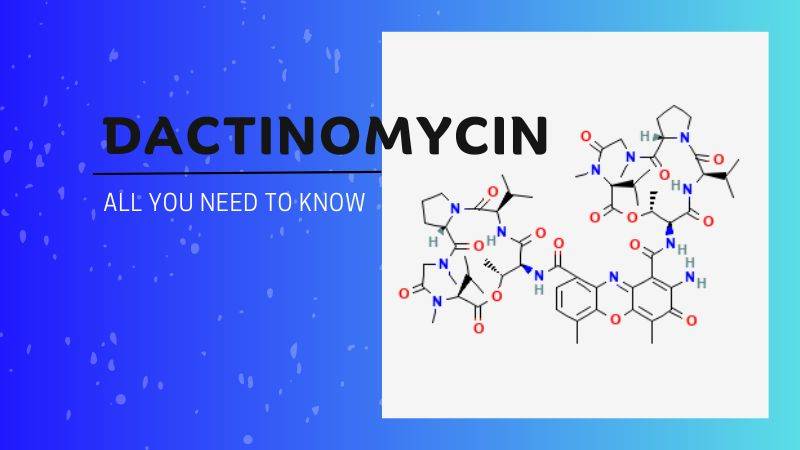Highlights
In an age where information overload is the norm, it can be challenging to separate fact from fiction, especially when it comes to health-related topics like Cancer.
With the internet serving as a breeding ground for misinformation, scare stories about cancer can spread rapidly through well-intentioned shares on social media and email chains.
Unfortunately, some of these stories may be fueled by companies aiming to promote their “safer” or “chemical-free” products, leading to widespread confusion and anxiety.
With millions of people affected by cancer worldwide, it is crucial to debunk these myths and provide accurate information to raise awareness and promote informed decision-making.
In this article, we debunk some of the most prevalent cancer myths so that you can focus on what truly matters.
Myth: Cancer is Contagious

Fact: Cancer is not contagious and cannot be transmitted from person to person through touch, bodily fluids, or any other means.
It is caused by genetic mutations within cells, which can be influenced by a combination of genetic, environmental, and lifestyle factors.
Myth: Cancer is Always a Death Sentence

Fact: Cancer research, diagnosis, and treatment advances have significantly improved survival rates over the past few decades. Early detection and appropriate treatment can lead to favorable outcomes for many cancer patients.
It is important to remember that cancer is not a single disease but a collection of over 100 different types, each with its own characteristics and prognosis.
Myth: Cancer is Always Caused by an Unhealthy Lifestyle

Fact: While lifestyle choices can indeed contribute to cancer risk, they are not the sole cause. Many factors, including genetics, environmental exposures, and random mutations during cell division, can lead to cancer.
Although adopting a healthy lifestyle is important for cancer prevention, it does not guarantee that an individual will never develop the disease.
Myth: Antiperspirants and Underwired Bras Cause Breast Cancer

Fact: For nearly two decades, claims suggesting that antiperspirants and underwired bras cause breast cancer have persisted. However, you can breathe a sigh of relief knowing that no scientific evidence supports these claims. The theories behind these claims include:
- Antiperspirants prevent the body from eliminating “toxins,” leading to cancer.
- Chemicals from antiperspirants enter the lymph nodes through sweat glands.
- Bras, especially those with underwires, block lymph channels, impairing the body’s ability to fight off cancer and infection.
Despite the prevalence of these theories, there is no scientific evidence, anatomical basis, or medical foundation to support them.
It is worth noting that over half of the breast cancers are found in the quarter of the breast closest to the armpit, but this is simply because that area contains most of the breast tissue.
Myth: Bubble Bath Causes Cancer

Sodium lauryl sulfate (SLS) is a widely used ingredient in bubble baths, shower gels, and shampoos, and has been the subject of cancer-related concerns in recent years. However, it’s essential to separate fact from fiction when it comes to the safety of this common ingredient.
Fact: There is no scientific evidence to suggest that SLS has any cancer-causing effects. The concerns surrounding SLS can be traced back to a single website and its purported “author” in America, who claimed that his name was being misused on the internet by companies promoting “natural” bath products.
This revelation confirms that the claims about SLS causing cancer are unfounded and driven by marketing tactics rather than genuine research.
While SLS is a highly effective detergent and is used in higher concentrations for industrial cleaning products, it is not a carcinogen.
However, it can cause skin and eye irritation, especially at high concentrations. If you have dry skin or hair, you may want to avoid products containing SLS, but there is no need to worry about cancer risk.
Myth: Microwaving Food in Plastic Containers is dangerous and Causes Cancer

Microwaving food in plastic containers has long been a subject of concern for some people, who believe that it could pose a danger to our health.
However, careful investigation and research have provided evidence to counter these claims.
The thorough investigation by the Food and Drug Administration (FDA) regarding the safety of microwaving food in plastic containers says “Any trace amounts of plastic that might dissolve while heating food are well within safe limits“.
Moreover, the FDA also examined claims that plastic containers and clingfilm food wrapping contain dioxins, which have been linked to cancer. The results showed that there are no dioxins present in any plastic container or clingfilm food wrapping.
The convenience of using microwave ovens and plastic containers can be enjoyed without fear, as research has debunked the concerns surrounding their use.
Myth: Mobile Phone use causes Cancer
 Concerns about the potential link between mobile phone use and cancer have circulated for years, with many wondering if their devices could put their health at risk.
Concerns about the potential link between mobile phone use and cancer have circulated for years, with many wondering if their devices could put their health at risk.
Fact: The majority of studies on mobile phone use, including a massive study involving over 400,000 participants, with 50,000 using mobile phones regularly for more than ten years, have found no link between mobile phone use and cancer development.
However, one study has suggested that long-term mobile phone use (more than ten years) might increase the risk of a non-cancerous tumor of the hearing nerve (acoustic neuroma) and a rare but aggressive brain cancer called Glioma.
Despite these findings, the evidence is not strong enough to warrant discarding mobile phones altogether.
While the evidence connecting mobile phone use to cancer is inconclusive and mostly reassuring, you may still want to consider taking some precautions. Limiting the time spent talking on your mobile or using a headset that keeps the antenna away from your brain are potential measures to reduce any potential risk.
Myth: Talcum Powder causes Ovarian Cancer

In 2016, talcum powder made global headlines when Johnson & Johnson was ordered to pay over £40 million in compensation to an American woman who developed ovarian cancer. This incident has raised concerns about the potential link between talcum powder and cancer.
Fact: A study involving 4,000 women (half of whom had ovarian cancer) concluded that using talc was associated with a 33% higher risk of developing the disease, with a trend for increasing risk depending on the duration and frequency of use.
However, this study had several flaws, and the number of women affected was minimal – even among those at the highest risk, only 41 cases of ovarian cancer were reported over 24 years.
Despite these findings, it is essential not to panic if you have used talcum powder in the past. The evidence is inconclusive, and the overall risk remains relatively low.
There are no known risks associated with avoiding talcum powder, and adopting a “better safe than sorry” approach may provide peace of mind.
Myth: Pesticides in Food Cause Cancer

Fears surrounding the presence of pesticides in food and their potential link to cancer have persisted for years, often stemming from the use of potent chemicals on crops in the past.
Fact: While concerns about pesticides and cancer risk have historical roots, modern pesticides are carefully regulated and monitored. National guidelines suggest that any potential risk, if present, is vastly outweighed by the health benefits of consuming fresh fruits and vegetables.
Nevertheless, it is always prudent to take precautionary measures. Washing your fruits and vegetables thoroughly before consumption can help minimize any potential risks associated with pesticide residues.
Myth: Artificial Sweeteners cause Cancer

The safety of artificial sweeteners, such as aspartame, has been a subject of debate and concern for many, with some suggesting a potential link to cancer.
Fact: The best available evidence, including numerous studies and reviews, demonstrates that artificial sweeteners, including aspartame, do not increase the risk of cancer.
The European Food Safety Authority (EFSA) has also reviewed the evidence, concluding that artificial sweeteners are not harmful within daily limits, which are more than most people would consume in one day.
Artificial sweeteners are chemical substances that taste sweet and are used as sugar substitutes in various products, including soft drinks, desserts, chewing gum, and toothpaste. They provide a sweet taste with fewer or no calories and are often found in “diet” or low/zero sugar products.
No link has been found between artificial sweeteners in diet or zero-sugar fizzy drinks and cancer. Low-calorie drinks containing artificial sweeteners can be part of a healthy, balanced diet.
It is essential to focus on proven causes of cancer and adopt a healthy lifestyle to reduce your risk.
Myth: Eating burnt food causes cancer

A common concern is whether eating burnt foods or foods high in acrylamide, such as toast or charred root vegetables, can increase the risk of cancer.
Fact: Acrylamide is a chemical found in starchy foods like bread and potatoes when cooked at high temperatures for extended periods.
However, the best available evidence does not show a link between consuming acrylamide from burnt toast, burnt chips, or crispy potatoes and an increased risk of cancer. High-quality studies have not demonstrated that acrylamide from food causes cancer in humans.
Instead, it is essential to focus on maintaining a healthy, balanced diet, which includes more fruits and vegetables, high-fiber foods, and reduced consumption of processed and red meats, sugars, fats, and salt.
Reducing processed meat consumption is a good idea for reducing cancer risk.
Although concerns exist about acrylamide and burnt foods, the best evidence available does not support a connection between these foods and increased cancer risk.
Myth: Milk and Dairy Products cause Cancer

Many people wonder if consuming milk and dairy products can cause cancer
Fact: There is insufficient evidence to prove that milk and dairy products cause cancer.
Casein, the primary protein in milk, has not been shown to cause cancer in humans.
Dairy products contain essential proteins, vitamins, and calcium that contribute to overall health, and high calcium content could play a role in reducing bowel cancer risk.
Dairy products do contain some hormones, but the amounts are very small compared to what the body naturally produces, and there is no strong evidence to show that these hormones cause cancer.
The NHS Eatwell Guide recommends including some dairy or dairy alternatives as part of a healthy, balanced diet.
Myth: An Injury or Blow to the Breast causes Cancer

Fact: Injuries, trauma, or blows to the breast do not cause cancer. There is no good explanation for how an injury could lead to cancer in breast tissue. However, injuries may sometimes lead to the discovery of cancer that was already present near the injured area.
If someone experiences an injury or blow to the breast, they may check the area themselves or have it examined by a healthcare professional.
If there is already cancer present, these checks could detect it, but this does not mean the injury caused the cancer. While they may sometimes lead to the discovery of pre-existing cancer or the formation of non-cancerous lumps.
Myth: Cosmetics Cause Cancer

There are concerns about whether chemicals in cosmetics can cause cancer.
Fact: There is no evidence that antiperspirants, or body sprays containing aluminum cause cancer. Personal use of hair dye is not linked to increased cancer risk, although daily exposure in hairdressers and barbers might raise bladder cancer risk, requiring further research.
Parabens used as preservatives in cosmetics, don’t cause cancer, and their potential estrogenic effect in rats hasn’t been proven in humans.
Myth: Medical Scans and Air Travel cause Cancer

High-energy ionizing radiation can cause cancer by damaging cells and DNA. Some medical scans, like X-rays, expose us to small amounts of ionizing radiation, but the health risks are low and typically outweighed by the benefits of accurate diagnosis.
Radiation exposure during air travel or airport body scanners is unlikely to increase cancer risk.
Cosmic radiation is slightly higher at higher altitudes, but the additional exposure for passengers is minimal and unlikely to affect cancer risk, even for frequent flyers.
Airport body scanners use low levels of ionizing radiation or non-ionizing radiation, which have not been shown to increase cancer risk.
Myth: Stress cause cancer

Stress does not directly increase cancer risk. High-quality, long-term studies have found no evidence linking stress to a higher risk of cancer.
However, how people cope with or manage stress can affect their health and potentially impact cancer risk.
Stress may lead to unhealthy behaviors such as smoking, poor diet, excessive alcohol consumption, or reduced physical activity, which can indirectly increase cancer risk.
If you are struggling with prolonged stress, it’s important to talk to your doctor about ways to manage it. Remember, there are many proven ways to reduce cancer risk and maintain a healthy lifestyle.
In a Nutshell
Dispelling cancer myths is crucial for providing accurate information to the public and empowering individuals to make informed decisions about their health.
By debunking these misconceptions, we can promote greater understanding and encourage proactive steps toward cancer prevention and early detection.
Always consult with a healthcare professional for personalized advice and evidence-based information on cancer and its treatments.
Take Care of Yourself!
Also Read






